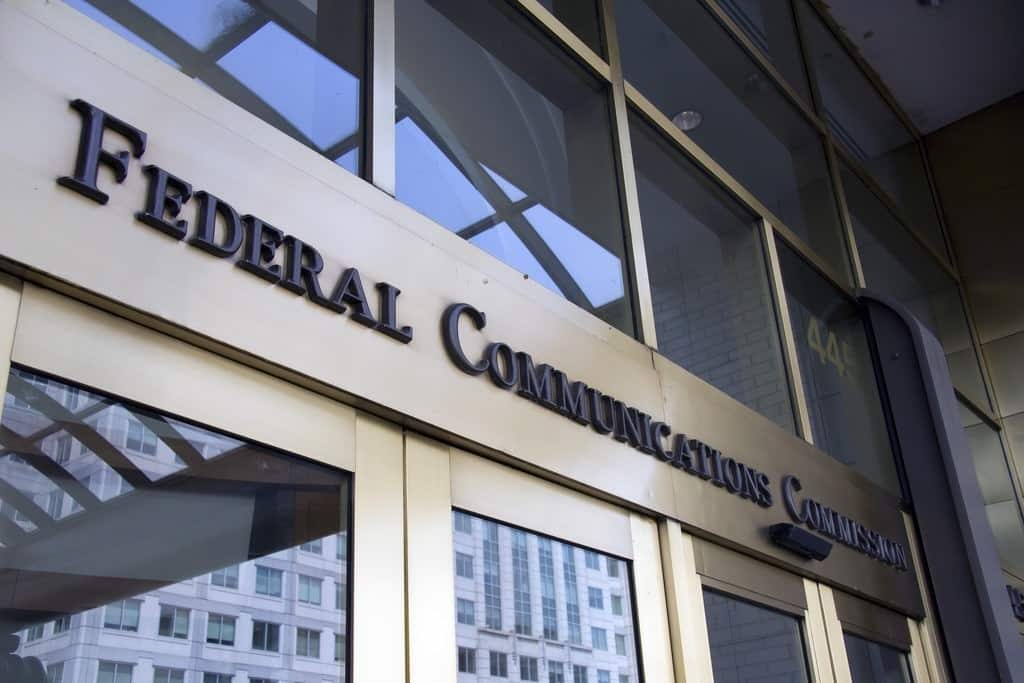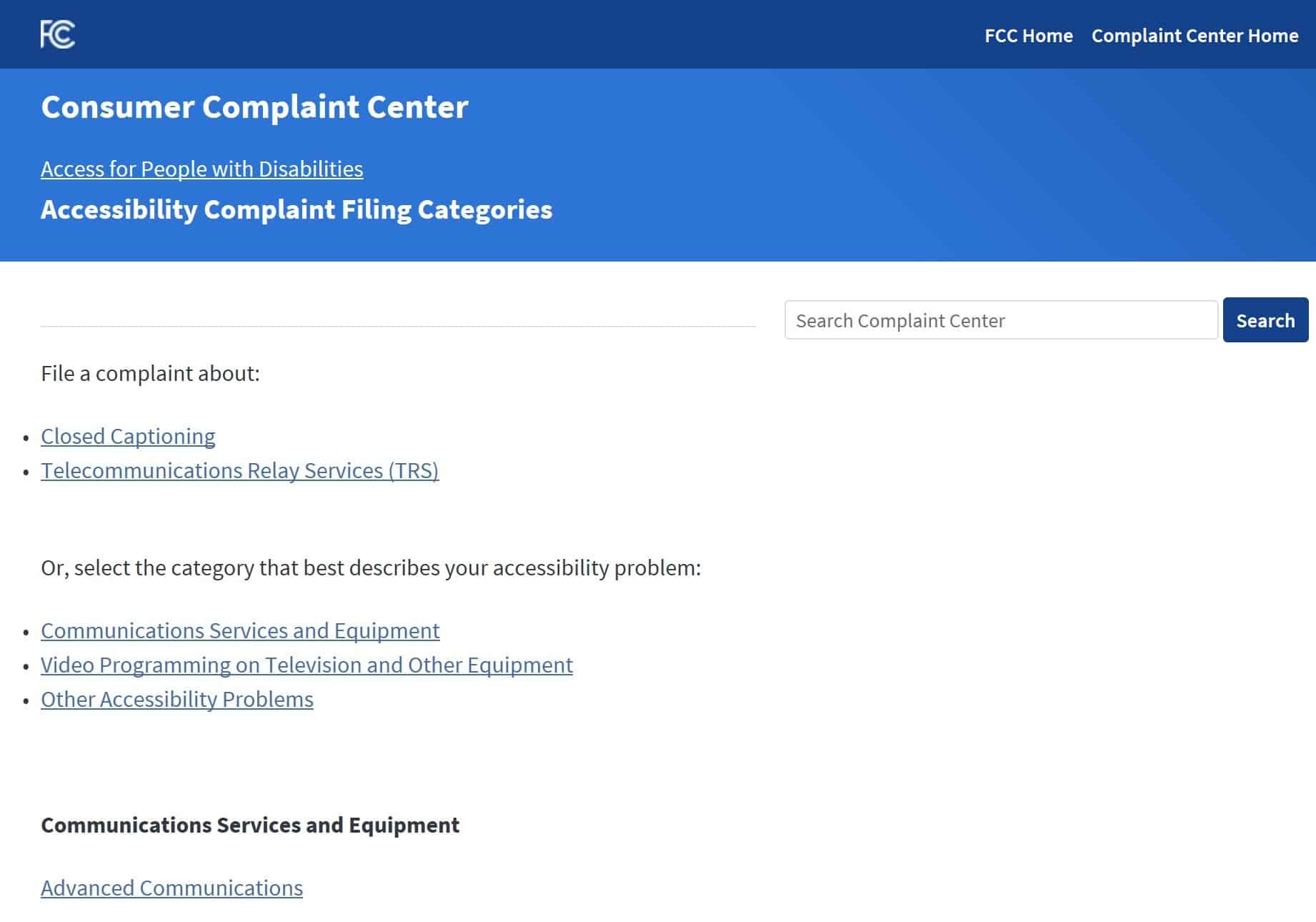TV Regulations (United States)
VITAC meets all FCC Caption Requirements
According to television captioning regulations set by the Federal Communications Commission (FCC), almost everything on TV must be captioned, including Spanish and English programming, scheduled programs, and on-demand shows.
“On TV” applies to anything a viewer receives over the air (antenna) or from a cable, satellite, or fiber subscription. For programming delivered via IP (Netflix, Apple TV, Hulu, etc.), see IP Programming Regulations.
The most common exceptions to the TV captioning rules are:
- Late Night Programming: Programming airing between 2 and 6 a.m. is not required to be captioned
- New Networks: New networks are exempt from captioning requirements for four years. Note that this does not apply to a network that has changed names, but only to entirely new networks
- Low Revenue Networks: Channels are not required to spend on captioning more than 2% of their gross revenue, as reported to the FCC, for the previous year. In addition, channels reporting revenues of less than $3 million are not required to caption, though they are required to pass through captioning
- Short Form Programming and TV Advertisements: Interstitial material, promotional announcements, and public service announcements that are 10 minutes or less in duration are not required to be captioned
Read more about exemptions to the FCC’s captioning rules.
Caption Quality Terms to Know
- Accuracy: Captioning shall match the spoken words (or song lyrics when provided on the audio track) in their original language (English or Spanish), without paraphrasing, except to resolve any time constraints
- Synchronicity: Captioning shall coincide with the corresponding spoken words and sounds to the greatest extent possible
- Completeness: Captioning shall run from the beginning to the end of the program, to the fullest extent possible
- Placement: Captioning shall not block on-screen graphics

Caption Quality Best Practices
VITAC certifies compliance.
The FCC released a Report and Order in 2014 outlining a series of best practices to be followed by programmers and caption vendors, among others.
VITAC helped draft the captioning vendor best practices and we certify to our customers that we are in compliance. We’ve summarized programmer and captioning vendor best practices below, but please see the FCC’s website for complete details.
Video Programmer Requirements
- Insist on performance requirements in agreements that adhere to best practices for caption vendors, and ensure vendor’s captioners are properly trained
- Develop a means to verify that performance requirements are met
- Provide relevant prep materials, including names of guests, show rundowns, song lyrics, etc
- Ensure that prerecorded shows are captioned by offline captioners and with offline workflows, with some exceptions
- Check offline captions periodically for accuracy of text and timing before air, and verify the presence of realtime captions during live broadcasts
- Post caption vendor contact information where it easily can be spotted, such as a master control room
- Record caption issues and communicate them to the caption vendor. Develop protocols for troubleshooting captioning issues
Caption Vendors/Captioner Requirements
- Create metrics to assess accuracy, synchronicity, completeness, and on-screen placement of realtime captions
- Screen, train, and periodically evaluate all captioners
- Provide a reliable technical infrastructure to ensure technical and other support to video programmers and captioners at all times
- Verify captioners are prepared and in position prior to a scheduled assignment
- Create technical and operational systems to ensure live caption delivery is as fast and reliable as possible
- Review discrepancy reports, respond to video programmer and viewer concerns in a timely manner, and make adjustments as necessary
- Monitor captions and alert video programmers immediately if a technical issue needs to be addressed on their end
- Keep abreast of developments in any aspect of the closed captioning process and their implications
- Ensure offline captions are verbatim, error-free, synchronized with the audio, and include speaker identifications and sound effects

Audio Description
The FCC requires local affiliates of ABC, CBS, Fox, and NBC in the top 70 TV markets and the top 5 non-broadcast networks to provide 87.5 hours per calendar quarter (about seven hours per week) of audio described programming, of which 50 hours must be prime time and/or children’s programming, and 37.5 hours may be any type of programming shown between 6 a.m. and midnight.
The top five non-broadcast networks currently are USA Network, HGTV, TBS, Discovery, and History. (Please note: the FCC updates these stations every three years to account for changes in ratings. Beginning July 1, 2021 through July 1, 2024, the top five cable networks subject to audio description requirements will be TLC, HGTV, Hallmark, History, and TBS.)
In addition to these networks, many other stations and OTT platforms provide audio description on their programming voluntarily.
These standards are reviewed periodically and updated to reflect changes in viewing habits and community need. For example, in October 2020, the FCC OK’d an order expanding audio description requirements to an additional 40 designated market areas (DMAs) over the next four years. The new requirement, which began in January 2021, will phase in an additional 10 DMAs each year for four years.
In 2023, the FCC will determine whether to continue expanding audio description requirements to additional DMAs beyond the top 100.
Spanish Captions
The FCC mandates that most programs broadcast in English and Spanish be captioned. The commission’s 2014 update on captioning rules required that all new bilingual English and Spanish-language programming (and 75 percent of older, pre-1998 bilingual English and Spanish-language shows) be captioned as well as all on demand content.
Electronic Newsroom Technique (ENT)
Captioning for most live TV programming is created by specially trained captioners who listen to a program and “write” or speak what they hear. The captioners’ keystrokes and spoken words are translated by their computer into captions. The captions are transmitted to the broadcaster via modem or IP, and are incorporated into the TV signal. Realtime captioning is the most accurate way to caption live TV and must be used by the major national broadcast television networks and their affiliates in the top 25 markets as defined by Nielsen.
However, stations outside the top 25 markets may not be able to afford realtime captioning. As such, they are permitted to use Electronic Newsroom Technique (ENT), whereby captions are created from a newscast’s prewritten scripts. ENT captions require reporters and anchors to stay on script as only the scripted material will be displayed as captions.
As part of the FCC’s caption quality Report and Order, rules were put in place to ensure ENT captioning was as complete as possible. These rules include the scripting of in-studio produced programming and weather interstitials. Stations must also appoint an ENT coordinator responsible for ensuring compliance with the new rules.
Make Your Voice Heard
Networks are required by law to caption almost all programming, and your cable provider is required to ensure those captions get to your television. All stations and cable companies are required to provide captioning contact information on their website and cable bill.
If you see a television program that has no captions, missing captions, delayed captions, or captions that generally are unreadable, it’s a good idea to write to your stations first and alert them of the issue.

The FCC complaint form will ask for your name, email address, and description of the problem. It also will ask for specific information, such as the name of the program you tried to watch, the date and time you tried to watch it, the network/channel you were watching, and a description of the captioning problem.
Filing a complaint about the quality of captions you see is a way to alert your stations or the FCC of a problem that all parties (the commission, broadcaster, network, and captioning provider) can work through to find a solution. It also enables the FCC to collect data on specific errors or issues in relation to caption quality and accuracy and, if they see a continued trend or unusual number of complaints on a certain topic or from a certain broadcast market, spur officials to conduct closer investigations.
Once a complaint is submitted, the FCC will evaluate the concerns and contact you if more details are needed. They then will reach out to the programmer, TV station, or caption vendor with the complaint. The investigation process can take one to two months.
Accessible, readable captions aren’t a privilege – they’re a right. And one of the ways to bring about change in the quality of captions you see on air is to let your voice be heard.